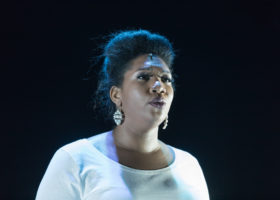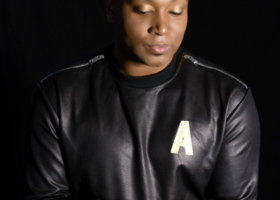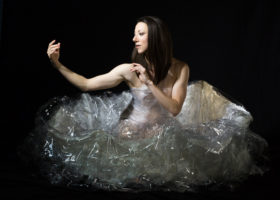
Arrange two cameras in close proximity to a subject. Then press record. Close-Up is both a formal exercise and a video series taking a literal close look at Pittsburgh artists in performance. See more in this series here.
![]()
Last June, for The Glassblock’s Close-Up series, violist Ji Young Nam transferred three of Johann Sebastian Bach’s suites for unaccompanied cello to the viola. Taking inspiration from baroque dance forms, Bach’s cello suites are some of the most celebrated solo cello music. For his final edition of Close-Up, Ji Young Nam, who also regularly performs with the West Virginia Symphony Orchestra Chorus, the Canton Symphony Orchestra, and the Erie Philharmonic, transposes three additional movements from cello suites to the viola via Simon Rowland-Jones arrangements. Watch Nam’s performance below, and then read in her own words the thought behind her selection of these pieces.
![]()
“I originally picked six movements of Bach inspired by six qualities that I personally experienced in my life,” says Nam. “Those six qualities are love, joy, peace, quiet mind, energy, and inspiration. Personally, Bach’s solo cello music expresses the existence of both a sacred place where we think everything desirable can be found and the earthy side where we find suffering, sadness, and agony.”
In the video, the first two pieces are Allemandes. Simon Rowland-Jones notes that, “Typical allemandes of the early eighteenth century fall into two categories : either slow in eight and serious, characterized by the word grave or more lively in four, sometimes marked gaie. The allemandes in the cello suites are certainly a far cry from their earlier dance counterparts. While retaining elements of the dance character they are much closer in style and form to Corelli’s virtuoso sonata movements with their sonata style figurations.”

Nam says that Suite No.1 Allemande is about “Inspired action,” stating, “When we are inspired, our actions are smooth, effortless, and in flow and I wanted to bring out the image of flow. I think inspired action is also very similar to spring water flow in nature, hitting rocks in between and making its turns smoothly.”
For Nam, Suite No.3 Allemande represents “Radian Energy.” She writes, “This movement has a very interesting rhythm that is playful and bouncy. The beginning of the movement is a bold statement that is confident and announcing. The range of interval from one note to another is very far, up to two octaves, [a strategy] that is usually used in the sense of two voices in other Bach solo works. In this movement, it is all connected in the melody and I love that jump because it gives me the feeling of the playfulness.”
The Gavotte first appeared in France in the late sixteenth century — the name is thought to be derived from natives of the Pays deGap, known as “Gavots.” Mattheson, an 18th century composer and theorist says, “the effect of the gavotte is jubilation, and it must have two, not four beats in the bar.”
Nam says Suite No. 6 Gavotte 1,2 is about “Joy Juice.” “The prominent main theme is very catchy, and it sounds to me like a humming song when you are in a good mood in a bathroom taking a shower. It is also very simple — pure childlike melody bringing great pleasure and happiness. I feel that the feeling of joy comes when we are in simple mind, not thinking of anything in a complicated way, and this movement flows within simple harmony, and easy going.”




